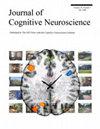Cortical and Subcortical Mechanisms of Orthographic Word-form Learning
IF 3.1
3区 医学
Q2 NEUROSCIENCES
引用次数: 0
Abstract
We examined the initial stages of orthographic learning in real time as literate adults learned spellings for spoken pseudowords during fMRI scanning. Participants were required to learn and store orthographic word forms because the pseudoword spellings were not uniquely predictable from sound to letter mappings. With eight learning trials per word form, we observed changes in the brain's response as learning was taking place. Accuracy was evaluated during learning, immediately after scanning, and 1 week later. We found evidence of two distinct learning systems—hippocampal and neocortical—operating during orthographic learning, consistent with the predictions of dual systems theories of learning/memory such as the complementary learning systems framework [McClelland, J. L., McNaughton, B. L., & O'Reilly, R. C. Why there are complementary learning systems in the hippocampus and neocortex: Insights from the successes and failures of connectionist models of learning and memory. Psychological Review, 102, 419–457, 1995]. The bilateral hippocampus and the visual word form area (VWFA) showed significant BOLD response changes over learning, with the former exhibiting a rising pattern and the latter exhibiting a falling pattern. Moreover, greater BOLD signal increase in the hippocampus was associated with better postscan recall. In addition, we identified two distinct bilateral brain networks that mirrored the rising and falling patterns of the hippocampus and VWFA. Functional connectivity analysis revealed that regions within each network were internally synchronized. These novel findings highlight, for the first time, the relevance of multiple learning systems in orthographic learning and provide a paradigm that can be used to address critical gaps in our understanding of the neural bases of orthographic learning in general and orthographic word-form learning specifically.正字法词形学习的皮层和皮层下机制
我们在 fMRI 扫描过程中实时研究了识字成年人学习口语假词拼写时的正字法学习初始阶段。参与者需要学习并存储正字法单词形式,因为伪单词的拼写无法通过声音与字母的映射进行唯一预测。每个词形有八次学习试验,我们观察了大脑在学习过程中的反应变化。我们在学习过程中、扫描结束后和一周后分别对准确性进行了评估。我们发现有证据表明,在正字法学习过程中,海马体和新皮层这两个不同的学习系统在起作用,这与学习/记忆双系统理论(如互补学习系统框架)的预测一致(McClelland 等人,1995 年)。双侧海马区和视觉词形区(VWFA)在学习过程中显示出显著的BOLD反应变化,前者呈上升模式,后者呈下降模式。此外,海马区的 BOLD 信号增加越多,扫描后的记忆效果越好。此外,我们还发现了两个不同的双侧大脑网络,它们反映了海马体和VWFA的上升和下降模式。功能连接分析表明,每个网络内的区域都是内部同步的。这些新发现首次强调了正字法学习中多重学习系统的相关性,并提供了一个范例,可用于解决我们对一般正字法学习和具体的正字法词形学习的神经基础的理解中存在的关键差距。
本文章由计算机程序翻译,如有差异,请以英文原文为准。
求助全文
约1分钟内获得全文
求助全文
来源期刊
CiteScore
5.30
自引率
3.10%
发文量
151
审稿时长
3-8 weeks
期刊介绍:
Journal of Cognitive Neuroscience investigates brain–behavior interaction and promotes lively interchange among the mind sciences.

 求助内容:
求助内容: 应助结果提醒方式:
应助结果提醒方式:


